4 Dham Yatra Budget: A Comprehensive Guide for Affordable Spiritual Travel
The Char Dham Yatra, which includes the sacred shrines of Yamunotri, Gangotri, Kedarnath, and Badrinath, is a deeply revered pilgrimage in Uttarakhand, India. Undertaking this journey requires careful planning, especially when it comes to budgeting. This comprehensive guide will help you understand the various components of the 4 Dham Yatra budget, offering practical tips to manage expenses and make the most of your pilgrimage without financial strain.

Embarking on this journey not only connects you with your faith but also offers an opportunity to experience the breathtaking landscapes and vibrant cultural heritage of Uttarakhand. The memories and spiritual insights gained from this pilgrimage will stay with you long after the journey ends, enriching your life and deepening your understanding of the divine.
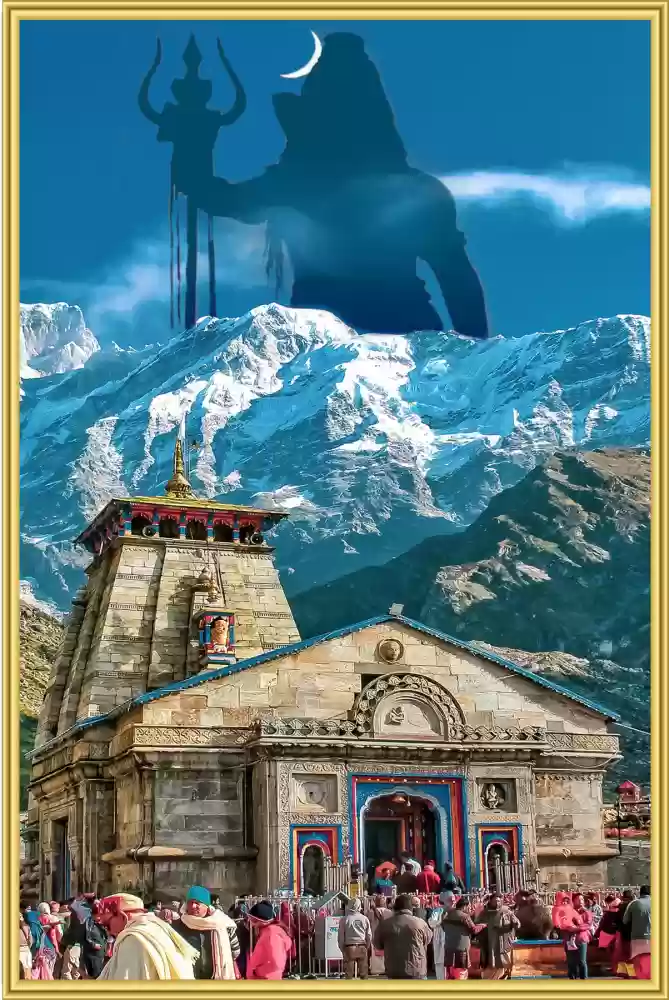
Key Components of the 4 Dham Yatra Budget
1. Travel and Transportation
Local Transportation: In addition to inter-city travel, you’ll need to budget for local transportation, including the cost of trekking or pony rides to certain shrines. Local transportation costs can add up, especially for high-altitude treks.
By Air: Many pilgrims start their journey by flying into major cities like Delhi, Haridwar, or Dehradun. The cost of flights will vary based on the time of booking, the airline, and the season. Booking in advance and being flexible with your travel dates can help reduce costs.
By Train: Traveling by train is a popular and economical choice. Haridwar and Rishikesh are key railway hubs for pilgrims heading to the Char Dham. Train fares depend on the class of travel (e.g., sleeper, 3AC, 2AC) and the distance.
By Road: The main part of the journey involves traveling by road. You can opt for private taxis, shared cabs, or bus services. Private taxis offer flexibility but can be more expensive. Shared cabs and buses are more budget-friendly options. Costs will vary depending on the distance, vehicle type, and season.
2. Accommodation
- Types of Lodging: Accommodation options range from budget guesthouses and lodges to more luxurious hotels. Budget accommodations typically include basic amenities and are suitable for pilgrims looking to minimize expenses. Mid-range hotels offer more comfort but at a higher price.
- Cost Estimates: The cost of accommodation varies by location and season. On average, budget accommodations cost between ₹1,000 to ₹2,500 per night, while mid-range options may range from ₹2,500 to ₹5,000 per night. Prices can increase during peak season, so booking in advance is recommended.
3. Meals
- Meal Costs: Meals can be a significant part of your budget, especially if you are traveling for several days. Budget travelers can expect to spend around ₹200 to ₹500 per day on food, depending on the type of meals and places where you dine.
- Meal Plans: Some tour packages include meals, which can help manage costs. If not included, consider eating at local dhabas (roadside eateries) or budget restaurants to keep expenses low.
4. Entry Fees and Permits
- Temple Donations: While visiting temples, you might want to make offerings or donations. This is voluntary but can be a part of your spiritual practice. The amount varies based on personal choice.
- Permits: Certain areas may require permits, particularly in high-altitude regions like Kedarnath. These are usually minimal but should be factored into your budget.
5. Miscellaneous Expenses
- Shopping: You may want to buy souvenirs, religious items, or local handicrafts. Budget for these extra purchases, which can vary widely based on personal preferences.
- Emergency Costs: It’s wise to have a contingency fund for unexpected expenses such as medical emergencies, additional transportation, or unforeseen delays.
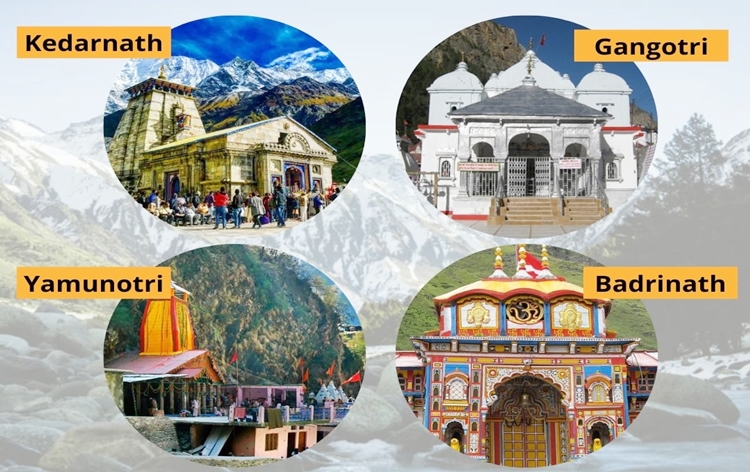
Sample Budget Breakdown for a 12-Day 4 Dham Yatra
Here’s a rough estimate of the budget for a 12-day Char Dham Yatra, assuming a mid-range travel style:
1. Transportation
- Airfare to Delhi/Haridwar/Dehradun: ₹5,000 to ₹15,000 (round trip, economy class)
- Train/Bus to Haridwar/Rishikesh: ₹500 to ₹2,000 (one way)
- Local Transport (Private Taxi/Shared Cabs/Buses): ₹15,000 to ₹25,000 (for the entire trip)
- Local Trekking/Pony Rides: ₹3,000 to ₹5,000
Total Estimated Transportation Cost: ₹23,500 to ₹47,000
2. Accommodation
- Budget Lodging: ₹1,000 to ₹2,500 per night
- Mid-Range Lodging: ₹2,500 to ₹5,000 per night
Total Estimated Accommodation Cost (7 nights):
- Budget Lodging: ₹7,000 to ₹17,500
- Mid-Range Lodging: ₹17,500 to ₹35,000
3. Meals
- Daily Food Expenses: ₹200 to ₹500 per day
Total Estimated Meal Cost (7 days): ₹1,400 to ₹3,500
4. Entry Fees and Permits
- Permits and Donations: ₹500 to ₹1,000
5. Miscellaneous Expenses
- Shopping and Souvenirs: ₹1,000 to ₹3,000
- Emergency Fund: ₹2,000 to ₹5,000
Total Estimated Miscellaneous Expenses: ₹3,000 to ₹8,000
Total Estimated Budget Range
For Mid-Range Travelers: ₹40,400 to ₹55,500
For Budget Travelers: ₹25,500 to ₹32,500
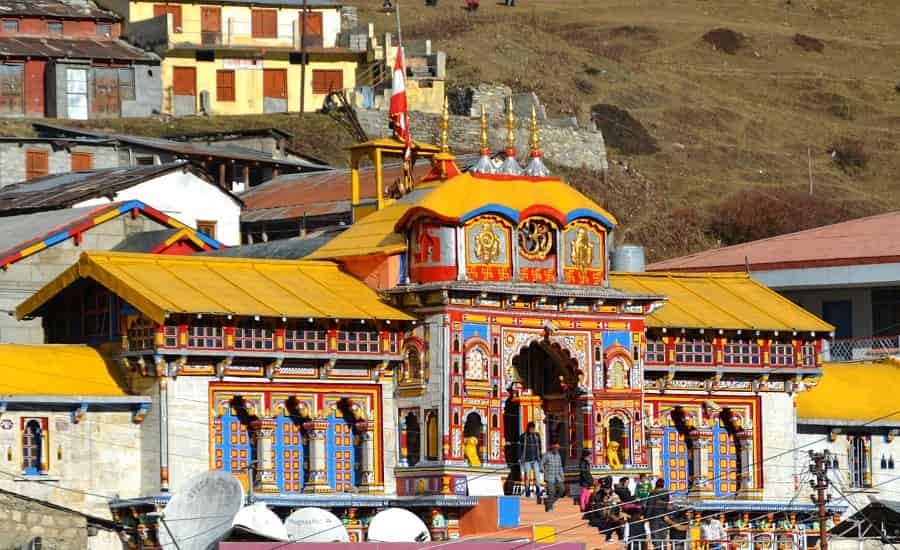
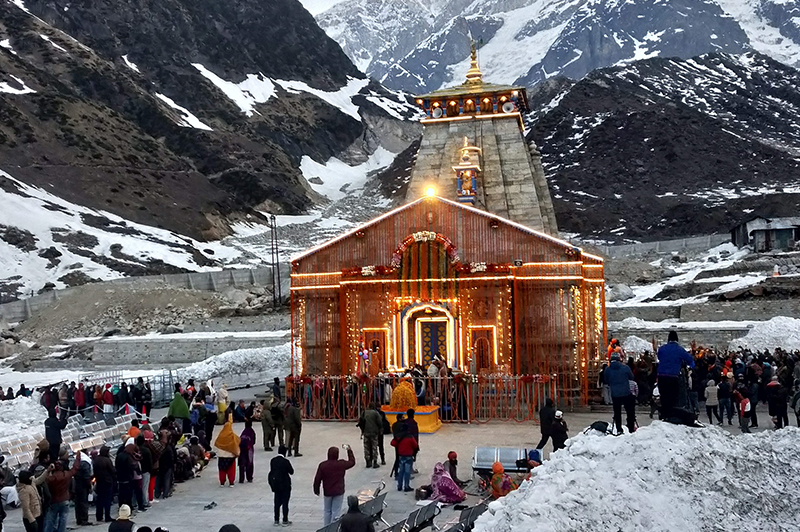
Tips for Budget Management
1. Book in Advance: Early booking for flights, trains, and accommodations can help you secure better rates and avoid last-minute price hikes.
2. Travel Off-Season: If possible, plan your trip during the off-peak season. This can significantly reduce costs for accommodation and travel.
3. Use Package Deals: Consider tour packages that include transportation, accommodation, and meals. These can often offer better value for money.
4. Plan Meals Wisely: Opt for local eateries and avoid high-end restaurants to keep meal costs manageable. Many guesthouses and lodges also offer meal plans that can be more economical.
5. Carry Cash: Many remote areas may not have access to ATMs or card facilities. Carry sufficient cash for small purchases and local expenses.
6. Travel Insurance: Invest in travel insurance to cover unexpected costs such as medical emergencies or trip cancellations.
The Char Dham Yatra, encompassing the revered temples of Yamunotri, Gangotri, Kedarnath, and Badrinath, is one of the most significant pilgrimage circuits in India. Situated in the picturesque state of Uttarakhand, this journey is not just a physical expedition but a deeply spiritual voyage that connects pilgrims with the divine and the natural beauty of the Himalayan region. Each site in this sacred circuit offers its unique charm, historical significance, and spiritual essence, making the Char Dham Yatra a transformative experience.
Yamunotri: The Source of the Sacred Yamuna
Location and Significance: Yamunotri is located at the foothills of the Bandarpunch Peak and is considered the origin of the Yamuna River. This temple is dedicated to Goddess Yamuna, a revered deity in Hinduism, believed to bestow purity and spiritual liberation. The shrine is accessible after a scenic trek from Janki Chatti, offering breathtaking views of the lush valleys and snow-capped peaks that characterize this remote region.
Unique Aspects: The primary attraction of Yamunotri is the thermal springs that bubble up from the earth. Pilgrims visit these springs to partake in ritualistic bathing, which is believed to cleanse the soul and body. The pristine beauty of the landscape, combined with the sacred rituals performed here, creates a profound sense of connection to the divine.

Gangotri: The Origin of the Sacred Ganges
Location and Significance: Gangotri is perched on the banks of the Bhagirathi River and is revered as the source of the mighty Ganges. The river, personified as Goddess Ganga, is one of the holiest rivers in Hinduism. The Gangotri Temple stands at an altitude of approximately 3,100 meters, surrounded by dense forests and lofty peaks, enhancing the sense of divine presence.
Unique Aspects: The temple’s serene setting and the presence of the sacred river make Gangotri a place of intense spiritual significance. Pilgrims often engage in the practice of taking a holy dip in the icy waters of the Ganges, believed to wash away sins and bring spiritual renewal. The natural beauty of the area, with its snow-capped peaks and lush forests, adds to the serene atmosphere.
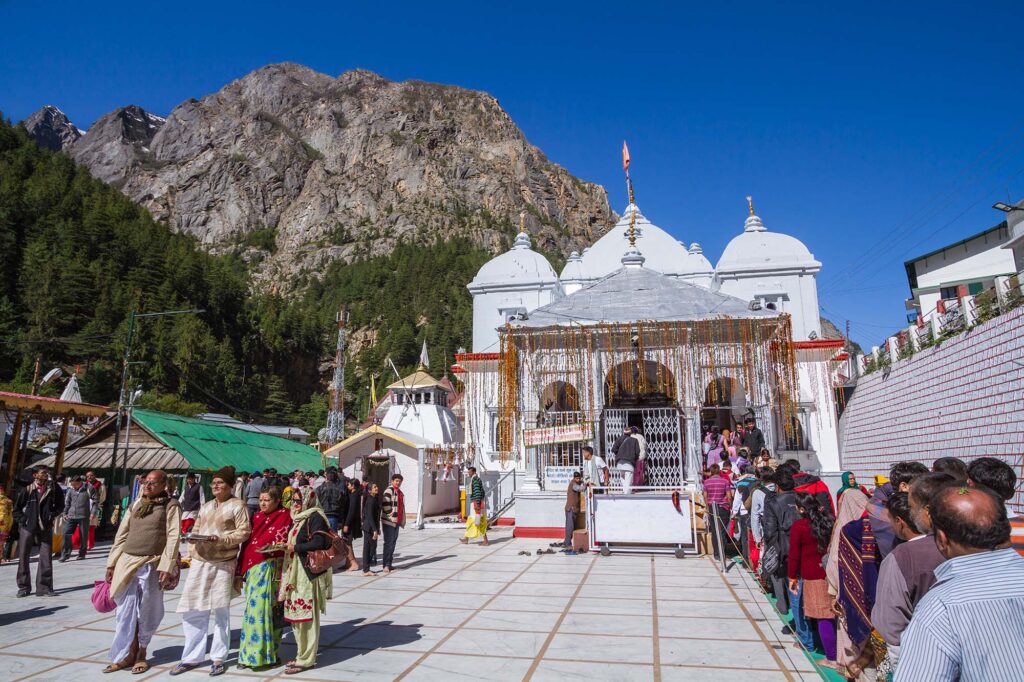
Kedarnath: The Abode of Lord Shiva
Location and Significance: Kedarnath is situated at a high altitude of about 3,583 meters, surrounded by the towering peaks of the Himalayas. This shrine is dedicated to Lord Shiva, one of the principal deities in Hinduism. The Kedarnath Temple is one of the twelve Jyotirlingas, which are believed to be manifestations of Lord Shiva. The temple’s location amidst the Himalayas makes it a place of awe and reverence.
Unique Aspects: The journey to Kedarnath involves a challenging trek from Gaurikund, which adds to the pilgrimage’s spiritual significance. The trek, though arduous, rewards pilgrims with stunning views of the majestic mountains and the sacred Mandakini River. The temple’s ancient architecture and its isolation amidst the snow-clad peaks contribute to a sense of profound spirituality and divine presence.
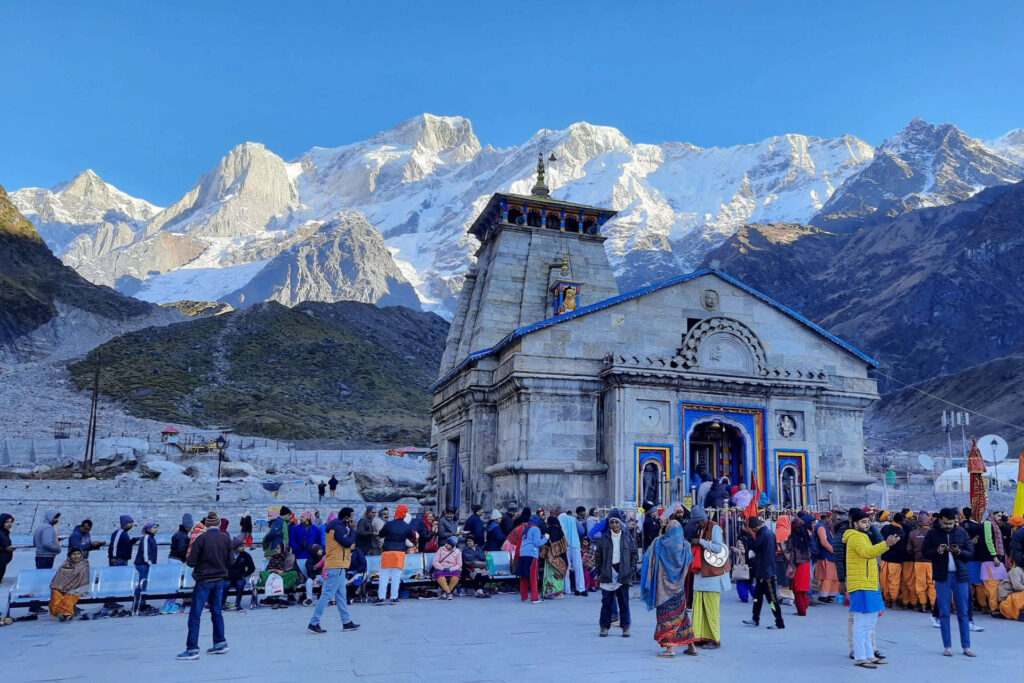
Badrinath: The Sacred Shrine of Lord Vishnu
Location and Significance: Badrinath, located in the northern part of Uttarakhand, is dedicated to Lord Vishnu. The temple is situated at an altitude of around 3,133 meters, alongside the Alaknanda River. Badrinath is part of the 108 Divya Desams (holy shrines dedicated to Vishnu), making it a focal point of devotion for followers of Vaishnavism.
Unique Aspects: The Badrinath Temple is known for its vibrant architecture and the nightly Aarti (prayer ceremony), where the temple is illuminated with thousands of oil lamps. Pilgrims visit this shrine to seek the blessings of Lord Vishnu and to experience the sacred ambiance created by the temple’s location and rituals. The surrounding landscapes, with their rugged beauty and serene atmosphere, enhance the pilgrimage experience.
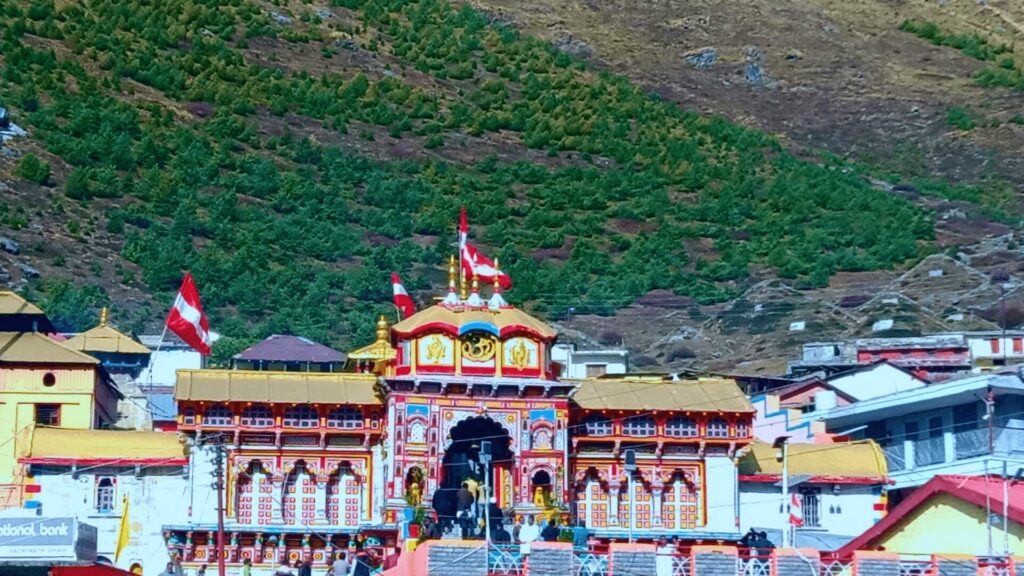
The Spiritual Essence of the Char Dham Yatra
The Char Dham Yatra offers more than just a visit to sacred sites; it is an immersive spiritual journey that encompasses physical, emotional, and spiritual dimensions. The pilgrimage allows individuals to reflect on their spiritual beliefs, engage in sacred rituals, and connect with the divine through the majestic natural beauty of the Himalayas.
Each site in the Char Dham circuit represents a different aspect of the divine, offering unique experiences and insights. From the thermal springs of Yamunotri to the high-altitude shrine of Kedarnath, and from the sacred waters of Gangotri to the vibrant rituals of Badrinath, the Char Dham Yatra encapsulates a journey of faith, devotion, and personal transformation.
Additional Tips for Reducing Costs in Your 4 Dham Yatra Budget
While the 4 Dham Yatra can be tailored to various budgets, there are several practical ways to minimize costs even further without compromising the spiritual experience. Below are additional tips to ensure your 4 Dham Yatra Budget stays on track:

1. Group Travel for Shared Costs
One of the best ways to lower the overall cost of your 4 Dham Yatra Budget is by traveling in a group. Whether it’s family, friends, or joining a travel group, sharing the costs of transportation and accommodation can drastically reduce individual expenses. For instance, hiring a private taxi for group travel is much cheaper per person than for solo travelers. Similarly, booking rooms for multiple people in budget hotels or dormitories can save significantly on accommodation costs.
Group travel also has the added advantage of shared resources, such as snacks, medical supplies, and even spiritual guides, ensuring a more enriching and economical journey.
2. Book Early to Lock in Lower Prices
As with many travel plans, booking in advance is a key strategy for reducing your 4 Dham Yatra Budget. Whether it’s train tickets, bus tickets, or accommodation, prices tend to rise closer to the peak yatra season. By booking early, you can avoid last-minute price surges. Most pilgrims begin booking transportation and lodging at least 3-6 months in advance, especially for peak months like May and June.
If you are opting for a tour package, early bookings can also unlock discounts or offers provided by travel agencies. Pre-booking services like helicopter rides or special darshan passes can also help avoid high demand and additional fees.
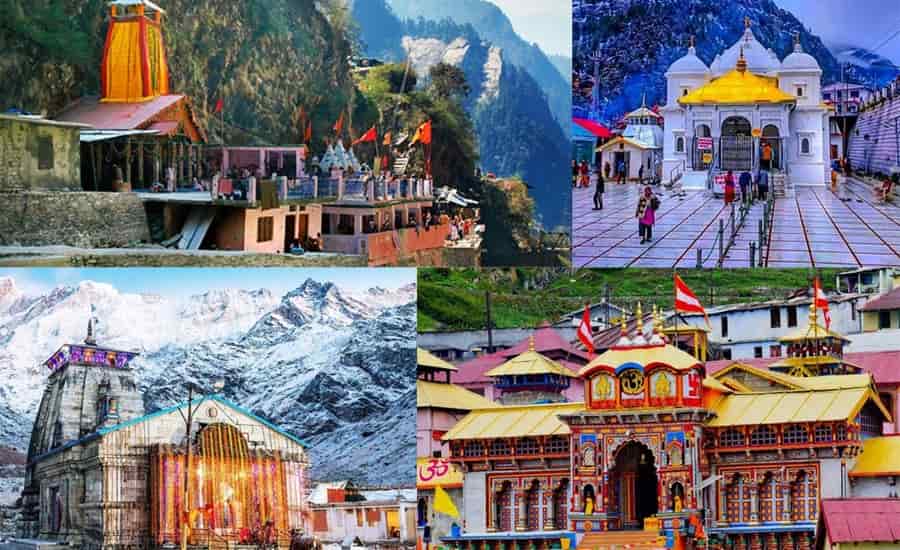
3. Avoid Unnecessary Purchases
While it may be tempting to buy souvenirs, religious items, or local handicrafts at the various dham locations, these can quickly add up, inflating your 4 Dham Yatra Budget. To keep costs down, limit purchases to essential items like offerings for the temples or spiritual souvenirs with personal significance. Bargaining is also common in markets near the temples, so don’t hesitate to negotiate prices, especially for items like religious accessories, incense, and clothing.
Carrying your own basic supplies, such as reusable water bottles, snacks, and toiletries, can also help avoid impulse purchases along the way.
4. Opt for Public Transportation
Instead of hiring private taxis for inter-dham travel, consider using public transportation, such as government buses or shared jeeps. Public transport options are reliable, safe, and a fraction of the cost of private vehicles. For instance, the Uttarakhand Transport Corporation runs buses to all four dhams at affordable rates, ensuring an economical solution for budget travelers. Shared jeeps, while slightly more expensive than buses, still offer a more budget-friendly alternative to private taxis and allow for quicker transit between the dhams.
When traveling from Haridwar or Rishikesh to the dhams, government-run buses are also a great option, costing anywhere between ₹300-₹500 per person for one-way travel. The savings from using public transport can be allocated to other areas of the 4 Dham Yatra Budget.
5. Use Digital Payment Platforms
In today’s digital age, many service providers along the Char Dham route accept digital payments through platforms like Paytm, Google Pay, or BHIM UPI. This is not only convenient but can also save money, as several platforms offer cashback rewards or discounts on certain transactions. When booking transport, accommodation, or meals in advance, be on the lookout for such offers to help reduce the overall cost of your trip.
Additionally, carrying cash is essential, especially in remote areas where digital payments might not be accepted. However, avoid the risk of carrying large amounts of cash by making digital payments whenever possible, ensuring safe and convenient transactions during the yatra.

Medical Precautions to Consider in Your 4 Dham Yatra Budget
While the 4 Dham Yatra is primarily a spiritual journey, the challenging terrain and high altitudes involved require medical preparedness, especially for pilgrims who are elderly or have health issues. Including a small allocation for medical expenses in your 4 Dham Yatra Budget is important to ensure that you are prepared for any health-related situations.
1. Carrying Basic Medical Supplies
Before starting the yatra, it’s essential to carry a personal medical kit that includes basic first-aid supplies, over-the-counter medications, and any prescription medicines. Some important items to carry include:
- Bandages, antiseptic ointments, and pain relievers
- Altitude sickness medication (such as Diamox)
- Oral rehydration salts (ORS) for dehydration
- Medications for headaches, colds, and stomach upsets
- Personal prescriptions for chronic conditions (diabetes, hypertension, etc.)
Having these items on hand can reduce the need to purchase expensive medical supplies during the yatra and ensure prompt treatment in case of minor injuries or illnesses.
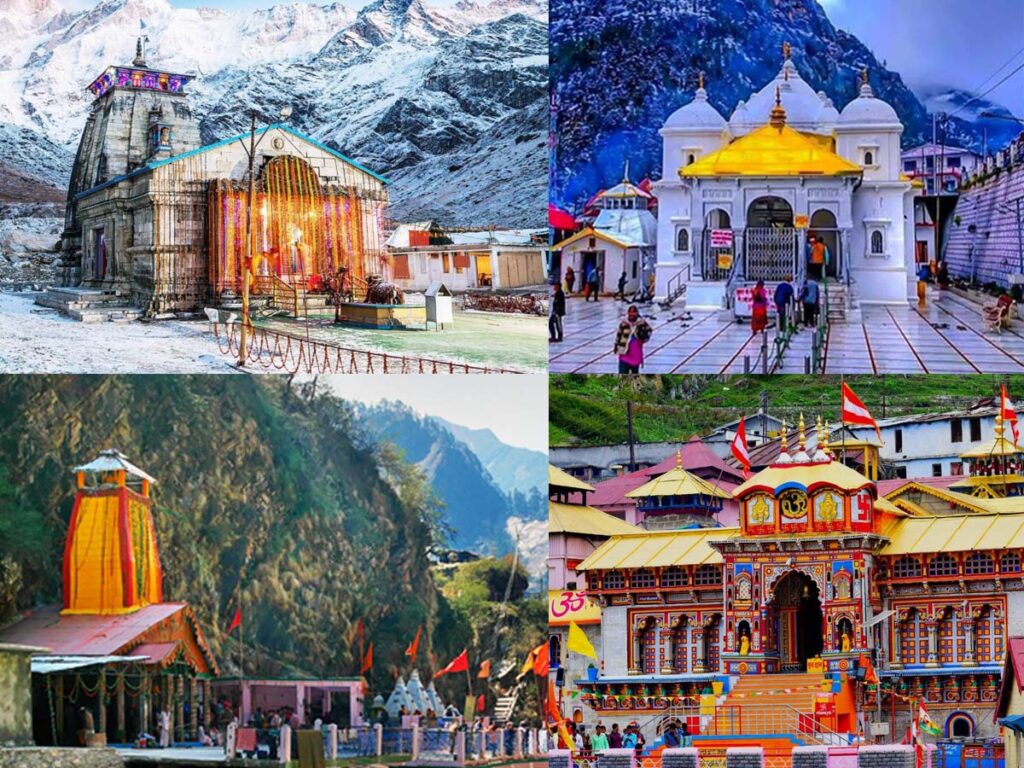
2. Health Check-ups Before the Yatra
For those with pre-existing medical conditions or for elderly pilgrims, it’s advisable to undergo a health check-up before starting the Char Dham Yatra. While this may incur some additional costs, it is a vital part of your preparation. Many hospitals and clinics offer health check-up packages for pilgrims, which include assessments of blood pressure, heart health, and oxygen levels.
A health check-up will also help you gauge your fitness level for trekking routes like Kedarnath and ensure you have the necessary medical support throughout the journey.
3. Travel Insurance
While travel insurance might seem like an unnecessary expense, it can provide coverage for medical emergencies, accidents, and trip cancellations. If you are planning a 4 Dham Yatra Budget with some flexibility, adding travel insurance ensures that unexpected expenses, such as medical evacuations or hospital stays, don’t strain your finances.
Several insurance companies offer specific packages for pilgrimage travelers, covering medical emergencies and helicopter rescues in high-altitude regions like Kedarnath. These packages are reasonably priced, ranging from ₹1,000 to ₹3,000 for a week-long journey, depending on the level of coverage. This is a small price to pay for peace of mind during a physically demanding yatra.
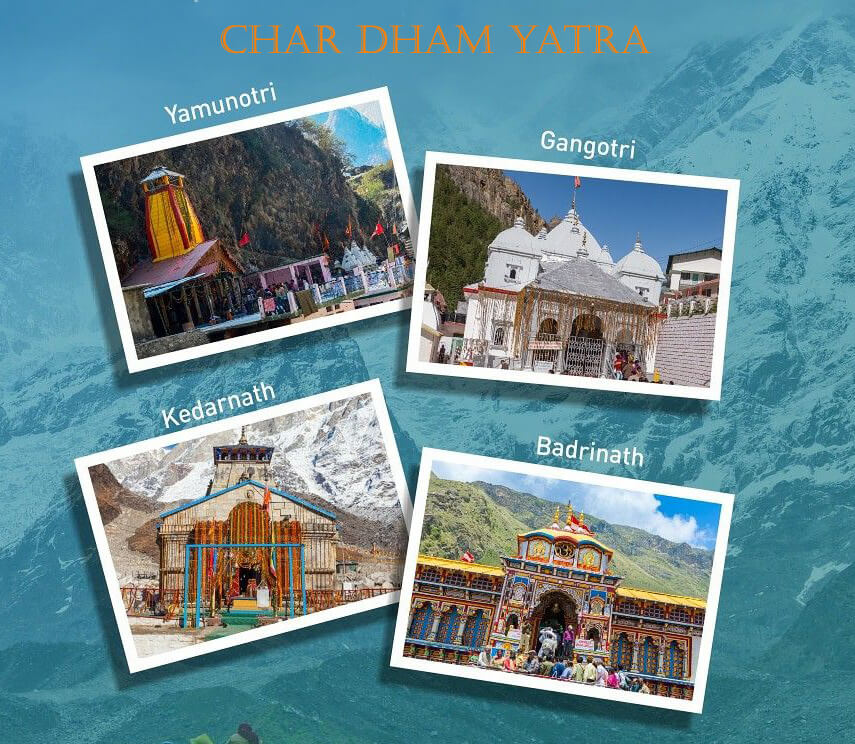
Festivals and Special Events Impact on 4 Dham Yatra Budget
Planning your pilgrimage around specific religious festivals or auspicious dates can greatly enhance the spiritual significance of the Char Dham Yatra. However, these periods also see a surge in the number of pilgrims, leading to higher prices for transport, accommodation, and other services. Here’s how to manage your 4 Dham Yatra Budget during festivals:
1. Festive Periods
Key festivals like Ganga Dussehra (celebrated at Gangotri) and Badri Kedar Utsav (celebrated in Badrinath and Kedarnath) attract thousands of pilgrims. While participating in these events can be a rewarding spiritual experience, it’s essential to book accommodation and transport months in advance to avoid inflated prices. In peak festive periods, prices for budget hotels can rise by 30%-50%, making early planning crucial to controlling your 4 Dham Yatra Budget.
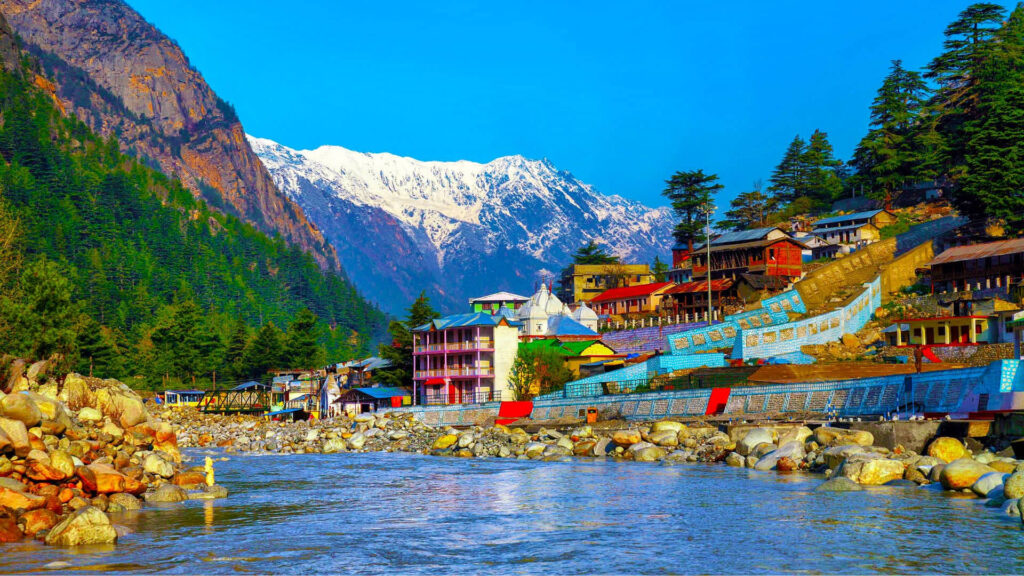
2. Auspicious Days and Religious Calendars
Many pilgrims time their yatra to coincide with auspicious days like Akshaya Tritiya, which marks the opening of the Char Dham temples. However, these dates are also peak travel times, and many local service providers, including transporters and hotels, increase their rates during these periods. To manage your 4 Dham Yatra Budget, consider visiting during non-peak days while still respecting religious calendars for meaningful darshan experiences.
3. Alternative Timing for Budget Travelers
To reduce costs, consider planning your Char Dham Yatra during the early or late parts of the season (April-May or September-October). During these periods, the weather is still favorable, but the crowd sizes are smaller, and accommodation and transportation rates tend to be lower. Traveling during these shoulder seasons can help you save significantly on your overall 4 Dham Yatra Budget, without compromising on the quality of your pilgrimage experience.
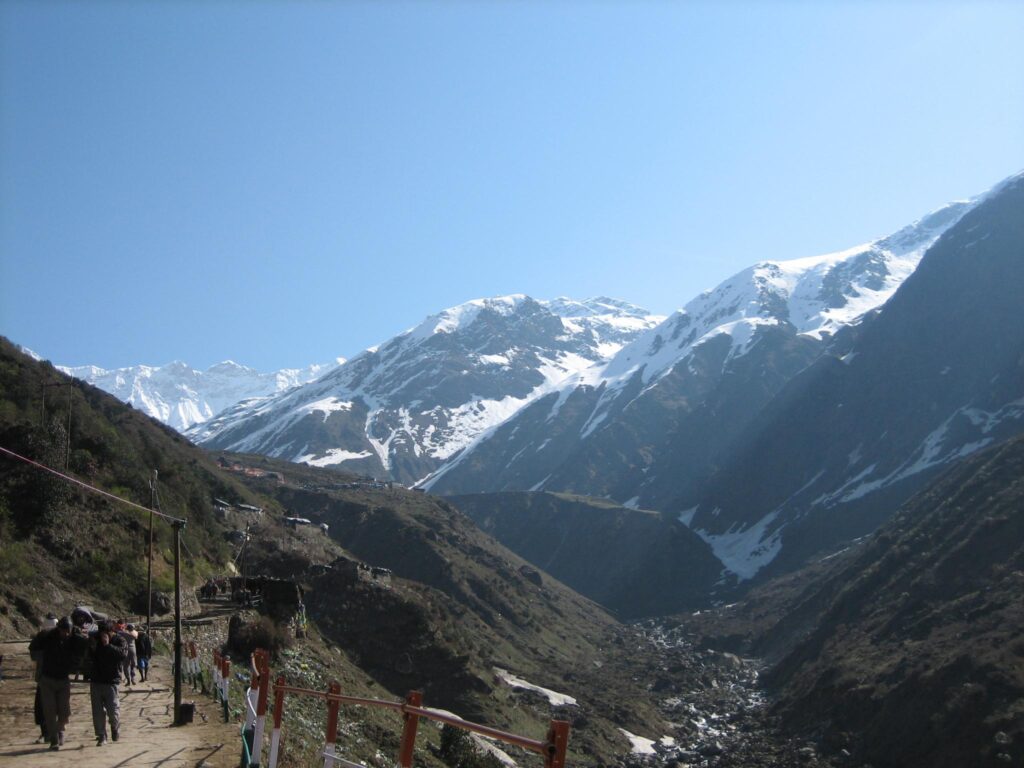
Safety and Security: Allocating for Contingencies in the 4 Dham Yatra Budget
Safety and security should always be a priority when traveling, especially in remote, high-altitude regions like the Char Dham. Including a small allocation for contingencies in your 4 Dham Yatra Budget is crucial to ensure you are prepared for any unexpected situations that might arise during the pilgrimage.
1. Weather-Related Delays
The weather in Uttarakhand can be unpredictable, with landslides, heavy rainfall, and snow affecting travel plans, especially in high-altitude areas like Kedarnath. Having a buffer in your budget for extra days of accommodation or alternative travel arrangements can prevent financial strain in case of delays.
2. Emergency Contact Numbers and Help Centers
Before embarking on the yatra, ensure that you have emergency contact numbers for local police stations, hospitals, and the Char Dham control rooms. Uttarakhand’s Disaster Management Authority (UTDMA) and the Nehru Institute of Mountaineering (NIM) have stationed personnel in key areas to assist with rescue operations. Pilgrims should also carry a portable power bank to ensure that their phones are always charged for emergency communication.
3. Security Measures
Although the Char Dham routes are generally safe, it’s always advisable to safeguard your belongings. Carry only the cash and valuables you need, and keep your important documents like ID cards and travel tickets in a secure place. This reduces the risk of loss or theft during the journey and ensures that your 4 Dham Yatra Budget is not derailed by the need to replace lost items or deal with unexpected travel disruptions.
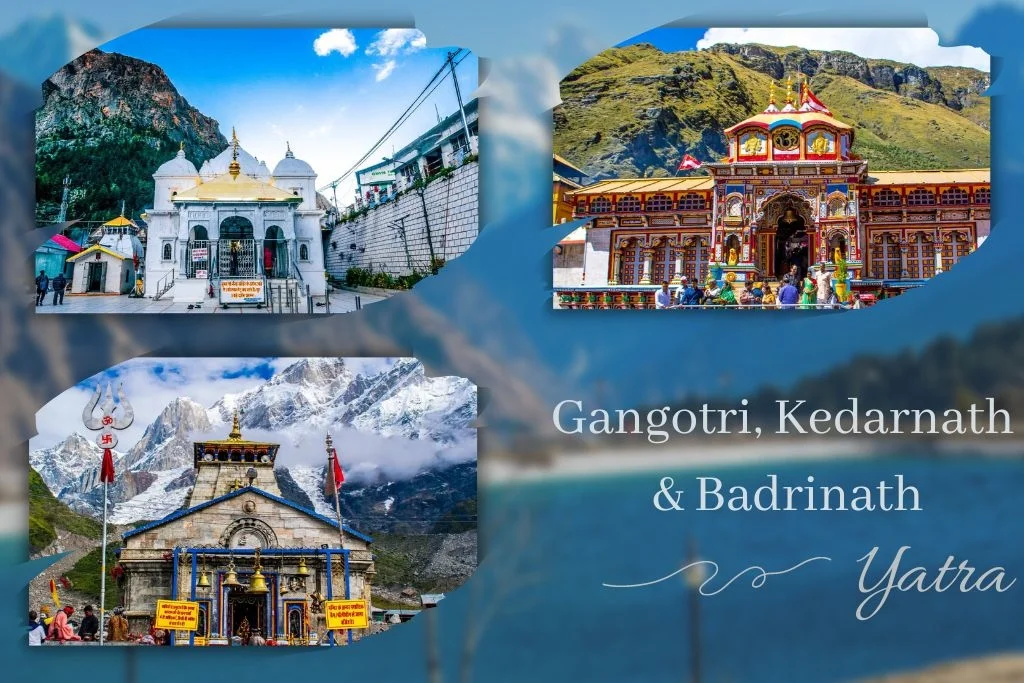
Conclusion
The Char Dham Yatra is a significant pilgrimage that requires careful budgeting to ensure a smooth and fulfilling experience. By understanding the key components of your budget—transportation, accommodation, meals, and miscellaneous expenses—you can plan effectively and manage your finances throughout the journey.
Whether you are a budget traveler or prefer mid-range options, careful planning and smart choices will help you enjoy this sacred pilgrimage without financial stress. Embrace the spiritual journey with peace of mind, knowing that you have prepared well and are ready to experience the divine beauty of the Char Dham.
For further assistance in planning your budget or booking your trip, consider consulting travel agencies specializing in Char Dham Yatra tours. Their expertise can provide valuable insights and help you tailor your travel plans to your budget and preferences.








Leave a Reply